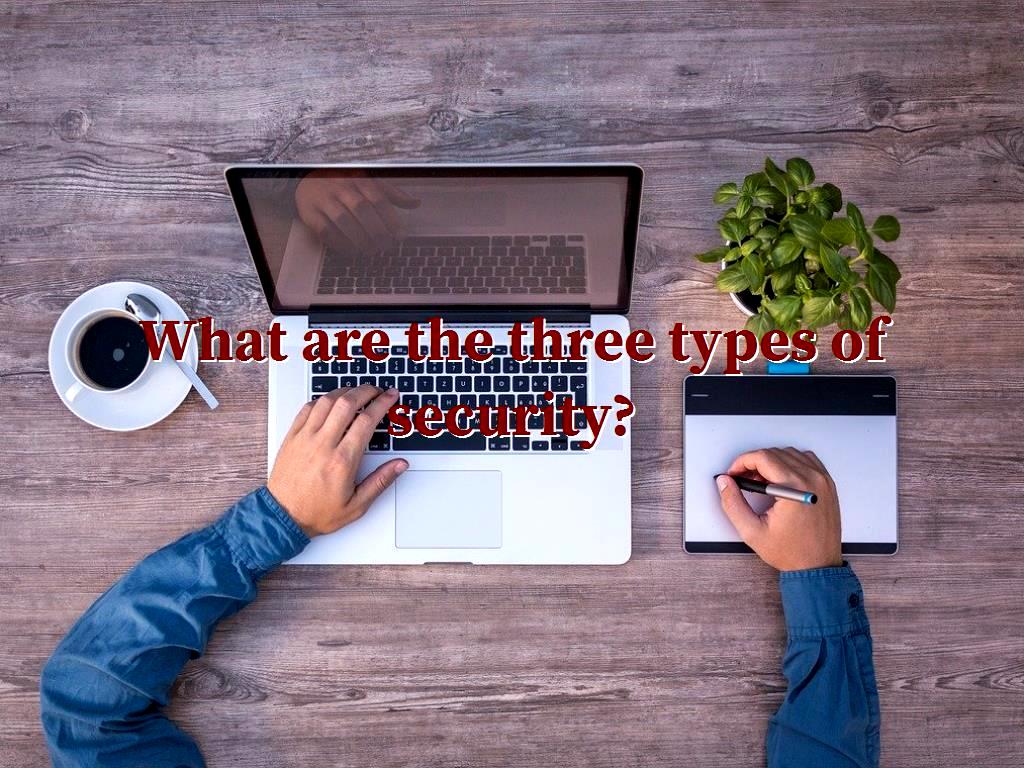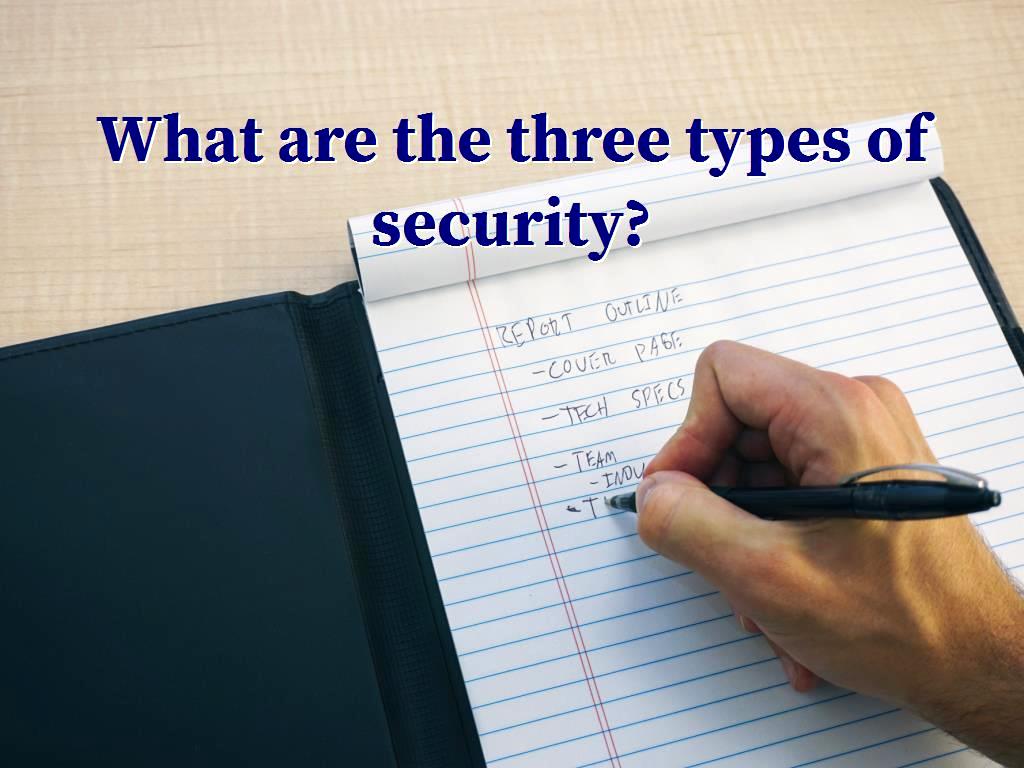What are the three types of security?
|
|
8 minute(s) read
|
Published on: Feb 01, 2022
Updated on: Mar 15, 2022
|

Security control considerably helps an organization analyze security gaps and external attacks and set the current security position. The management and security teams can design customized security controls through the security control assessment result. But, there is no complex and fast rule for security control assessment. Security might be a bouncer or a guard; it can be a parameter and action that an organization executes to protect information and sensitive data from invasion and various cyber-attacks and decrease and mitigate existing security risks or threats to critical assets. The essential purpose of having security is to reduce the outcome and probability of cyber security incidents. Each layer of security works to prevent extraordinary threats, which requires cyber security programs to provide multiple technologies and processes to prevent systems or people from being undermined. There are several varieties of security controls that facilitate guarding assets; security are classified on three function levels.
- Administrative
- Technical
- Physical
Administrative controls are one of the control measures and a type of hazard control. They are used to increase safety within the workplace by putting in place policies and regulations that minimize the risk of the business, which takes into attention the training, policy, or shift designs that lessen the threat of a hazard to an individual and schedules that support safety, as well as setting safe function procedures and standards to decrease vulnerability to hazardous perilous tasks. It trusts that administrative typically modification the behavior of people rather than the natural hazard or provide personal protective tools. Administrative controls are the fourth largest hierarchy of hazard controls, which ranks the effectiveness of hazard controls. They are second lowest because they require employers to actively think or comply with regulations and don't suggest constant solutions to the trouble. They emphasize recovering safety through the policies and procedures that worker behavior. It may include outlawing worker access to unsafe areas unless the worker's permit is approved by a principal, in addition to limiting work times due to decrease publicity to a potentially hazardous material or to avoid risk due to staff tiredness.
Technical are the set of security elements through data technology. It contains both hardware and software components that protect a system against cyber-attacks. Firewalls, intrusion detection systems encryption, and identification and authentication mechanisms are examples of technical controls. It can sometimes also be referred to as logical controls. Some security measures technical controls perform many critical functions, such as security utilizing technical measures to lighten risks and reduce vulnerabilities exposure in the world. Or they are keeping unauthorized individuals from gaining access to a system and detecting when a security violation has occurred. Because they are so serious, some people think of technical as being the whole of cybersecurity, paying no attention to other essential tools. Also, some mechanisms such as user authentication, password, data encryption, antivirus, firewalls, intrusion detection system, prevention Systems, and authentication are used explicitly for technical controls features.
Physical controls describe the protection of physical property. It refers to anything noticeable that is used to be aware of unauthorized access to a physical area, a system, or assets. This includes both physical assets, such as computers, as well as the actual facilities that the business resides in. The visible physical security are things like locks and security alarm systems. Things that are not often considered security measures that also fall under this group are environmental measures, like humidity control systems, fire suppression systems, and the design of the facility, if it is intentionally built to resist natural disasters like earthquakes or tornadoes. You need to keep your assets safe from burglars, internal threats, cyber-attacks, and mentioned natural disasters, which in turn demand a mix of technology and guarding that require watchful planning and placement of security workers and other strategies. For the preventive measures and another measure to be helpful, you also need to introduce a security perimeter, the scope of which might vary depending on your specific needs and possible threats to your facility. Physical security bundles many conditions together; therefore, be certain you consider your space as a whole, not as discrete parts.
Control Functions
The control function approach is a simple way of estimation in simultaneous equation systems. This requires that the system can be expressed in a form with variables satisfying a conditional independence restriction.
Economic models of optimization problems or interactions among agents often show the same. It is well known that any function in which an explanatory variable is partly determined by the dependent variable of the assignment cannot be identified without additional data. Typically, this additional information is produced by observable variables or functional structures. Here we focus on some of them, and each serves to have a different purpose. But the primary goal of implementing security controls is to prevent or stop the effect of a security incident. Preventative controls describe all security systems that are designed to block unwanted activities from occurring. It originated to keep errors or irregularities from happening in the first place. They're built into internal control systems and need a major attempt in the initial design and implementation platform. Even so, preventative controls do not require significant ongoing investments. For example, physical controls like locks and alarm systems; technical controls like an example of antivirus software, firewalls, and administrative controls like separation of duties, data classification.
Detective controls describe any security measure taken or solution implemented to detect and alert to unwanted or unauthorized activities in progress or after it has occurred. It originated to remove errors and irregularities that have already occurred and to assure their prompt correction. These controls show a proceed operating price and are often costly but necessary. Detective controls reserve the exact data errors, modify controls, or recover and refresh missing assets. For example, alarms or notifications from some sensors, police, or system administrators are examples of technical detective controls.
Corrective controls include measures taken to repair damage or restore sources and abilities to their previous state following unauthorized or unwanted activities. It will involve activities such as implementing a patch for a special vulnerability, disconnecting an infected system, and for example, blocking a virus, terminating a process, or running a scenario. Putting an incident response plan into action is an example of an administrative corrective control. Corrective controls work in sync with detective controls; detective controls come into action when preventive controls fail. Corrective actions are taken over by necessary the malicious file and removing it, along with sending a report to the concerned team in your business.
Processes and internal are never significant. With or without a set-on, errors and upsets will always be found. For this reason, an underway review and analysis process of the internal controls should be part of any organization's yearly security practices. The people element is liable to error, and malicious parties can and will find weaknesses in any organizations' control procedures. It is decisive to keep this in mind when considering internal.

Summary
The security control is an essential instrument and is executed by the data system consisting of the system's hardware, software, or firmware tools. On one occasion, an organization defines control objectives; it can assess the risk to individual assets and then select the most appropriate security controls to put in the situated property. Effective information security consists of rules from each area. Commands are based on the determination of risk and attacks. For a risk, controls from one or more areas may be relevant. The organization might apply physical security controls to restrict access to operational security controls to stop and detect unauthorized login to the server and management security controls to define who is authorized to access information. Risk is new to each organization, so the rules designed to address a given risk will also be unique.
The mentioned controls will help you begin to think about security a step beyond the network. Some are cheap and simple to implement, while some will need several investments of time and money. Even though all of the controls contribute to your security posture and help keep your company's assets and your fellow staff safe and secure.
Website SEO analysis services